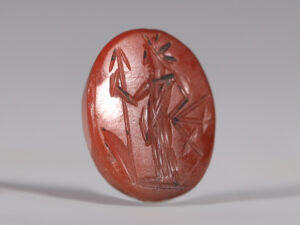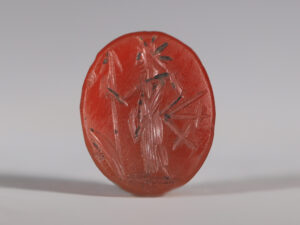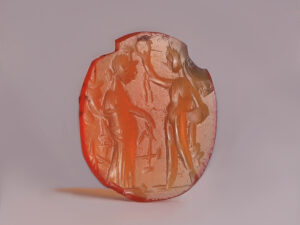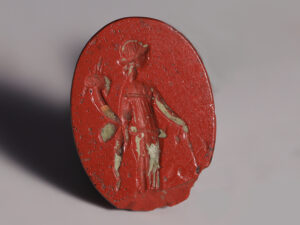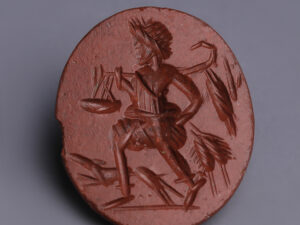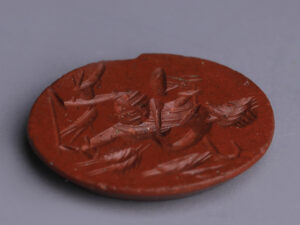The term intaglio refers to a small image that has been engraved into a gemstone and usually set in a piece of jewellery, most commonly a ring. Such an artistic form has its origin in Sumer in the 4th millennium BC, with the appearance of cylinder and stamp seals, whereby decorations and patterns were engraved into soft stones. During the Hellenistic period and the early Roman Empire, the art of intaglio reached its apogee, with there being a steady decline in craftsmanship in the late Imperial Rome, until a revival of interest in the Byzantine Empire and during the Renaissance.
The boar played a prominent role in ancient Greek and Roman culture. It was often associated with its capacity to destroy humans and crops, with boar hunting consequently becoming a popular pastime amongst Romans, considered to be strengthening for the body and mind. The boar was also a recurring motif in myths, such as the hunting down of the Erymanthian Boar by Hercules during his fourth labour.
To find out more about intaglios, please visit our relevant blog post: Engraved Gemstones in Ancient Rome.







